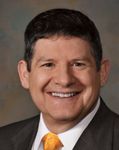- General Dermatology
- Eczema
- Chronic Hand Eczema
- Alopecia
- Aesthetics
- Vitiligo
- COVID-19
- Actinic Keratosis
- Precision Medicine and Biologics
- Rare Disease
- Wound Care
- Rosacea
- Psoriasis
- Psoriatic Arthritis
- Atopic Dermatitis
- Melasma
- NP and PA
- Skin Cancer
- Hidradenitis Suppurativa
- Drug Watch
- Pigmentary Disorders
- Acne
- Pediatric Dermatology
- Practice Management
- Prurigo Nodularis
Article
Expanding array of nonsurgical techniques helps to manage skin cancer
There are innovations in nonsurgical modalities for the treatment of actinic keratoses (AKs) and nonmelanoma skin cancers (NMSCs) and a basis for broadening the use of preventive strategies, says Leonard H. Goldberg, M.D.

Key Points

"Surgical excision remains the gold standard for treating basal cell and squamous cell carcinomas, but we now have alternatives offering cure rates approaching those achieved with surgery," says Dr. Goldberg, who is in private practice, DermSurgery Associates, Houston, and clinical professor of dermatology, The Methodist Hospital, Weill Medical College, Houston.
"Oral compounds in clinical development are producing exciting results, and we recognize that our nonsurgical modalities represent a valuable approach to providing field-directed prophylaxis," he says.
Oral acitretin (Soriatane, Roche) has a long history of use as NMSC chemoprophylaxis in organ transplant recipients and other immunosuppressed patients. However, Dr. Goldberg also believes all immunocompetent patients who have had a NMSC or multiple AKs on the face or scalp should be offered the option of routine, field-directed prophylaxis using topical chemoprevention with 5-fluorouracil (Efudex, Valeant; Carac, Sanofi-Aventis) or diclofenac (Solaraze, PharmaDerm), topical immunotherapy (Aldara, Zyclara; Graceway) or photodynamic therapy (PDT).
In his practice, patients who have been treated for AKs are asked to return for follow-up after six months and are retreated as needed. Patients who develop recurrent lesions are scheduled for prophylactic treatment every six months while others are treated on an annual schedule. Chemoprevention agents may be rotated at successive treatment intervals, particularly in patients who develop new lesions, in order to take advantage of the different mechanisms of action.
Enhancing cryotherapy
For primary treatment of AKs, the efficacy and safety of cryotherapy are improved with the use of a newer liquid nitrogen dispenser (Cry-Ac Tracker, Brymill) featuring an integrated infrared sensor that enables temperature-controlled treatment, Dr. Goldberg says.
The sensor measures skin surface temperature and, using a three-color-coded light system, provides a visual indication to the operator when the desired skin temperature is reached. The system is able to guide freezing of the epidermis and upper dermis to -5 degrees Celsius, which is adequate for AK clearance. This will avoid destruction of deeper tissue and therefore the development of scarring and hypopigmentation, Dr. Goldberg says.
"Cryosurgery remains the treatment of choice for individual AKs because it achieves high rates of clearance. However, the response can be unpredictable due to variability in treatment delivery. As reported in several published studies, average clearance rates for AKs are only about 75 percent," he says.
A recently published study by Dr. Goldberg and colleagues demonstrated the efficacy and safety of the new cryotherapy unit (Dermatol Surg. 2010;36(12):1956-1961). It included 36 patients with Fitzpatrick skin types I-III who had a total of 180 thin AKs treated using a circular, painting method with a wide freeze. All lesions were marked at baseline and photographed. At follow-up at six weeks, 100 percent clearance was achieved, and patients were satisfied with the results.
At one week post-treatment, erythema (42 percent) and crusting (21 percent) were the most common complications seen; oozing and ulceration each occurred at rates of 3 percent. All skin-related adverse events had resolved completely by six weeks and there were no cases of AK recurrence, scarring or hypopigmentation, Dr. Goldberg says.





